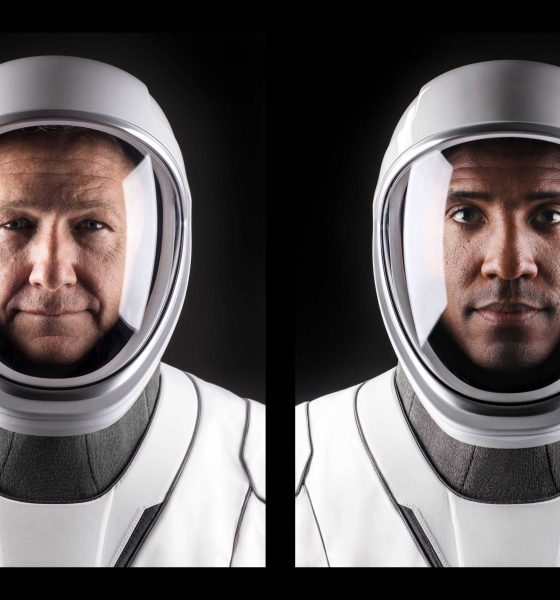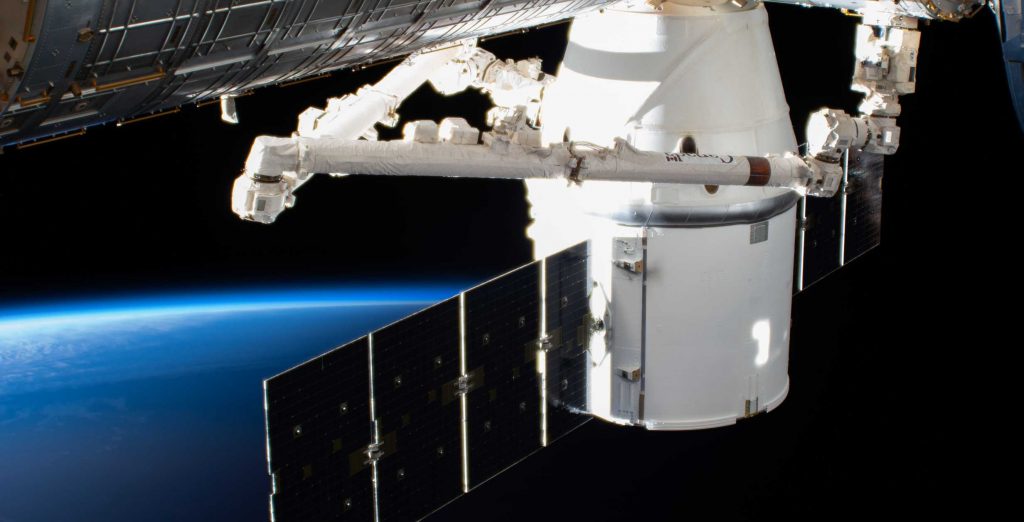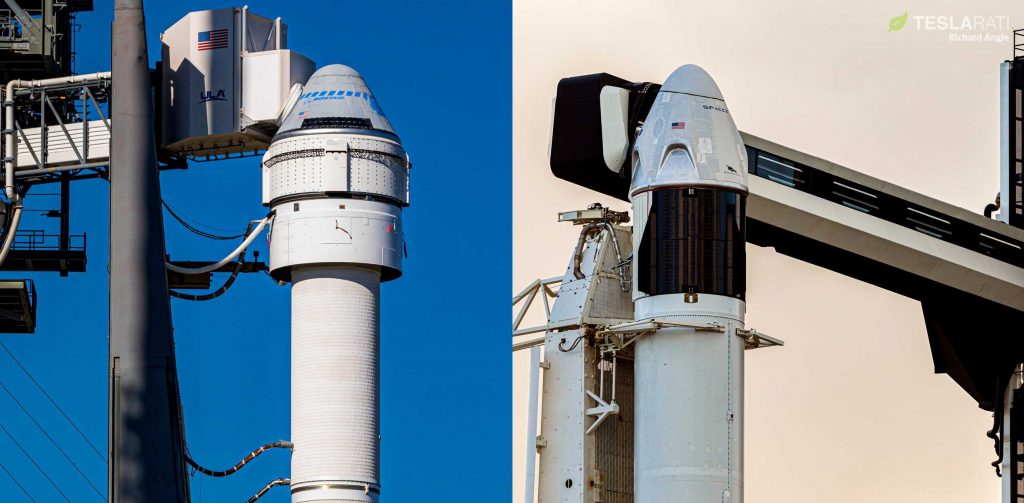

News
SpaceX’s second astronaut launch a step closer after NASA announcement
SpaceX’s second astronaut launch is a a step closer to flight after NASA and JAXA announced the third and fourth astronauts assigned to ride Crew Dragon to the International Space Station (ISS) on its first operational mission.
On the cusp of March 30th and 31st, the Japanese Space Agency (JAXA) made the first Crew Dragon-related announcement of the day, revealing the assignment of astronaut Soichi Noguchi to SpaceX’s Crew-1 launch. Hinging entirely on the success of SpaceX’s imminent Demo-2 astronaut launch debut, a critical demonstration mission scheduled to launch no earlier than mid-to-late May 2020, Crew Dragon’s Crew-1 mission will be the spacecraft’s first operational mission ferrying humans to and from the space station. NASA followed up JAXA’s announced hours later, revealing that astronaut Shannon Walker would be the fourth and final crew member aboard Crew Dragon’s Crew-1 launch.
Including Boeing’s Starliner and SpaceX’s Crew Dragon crewed demonstration missions, known as the Crewed Flight Test and Demonstration Mission 2 (Demo-2 or DM-2), respectively, NASA has purchased six astronaut launches from both providers. In theory, one Starliner and Crew Dragon launch per year – spaced out six or so months apart – should be enough to meet NASA’s space station transportation needs, meaning that the space agency’s 12 contracts should last until 2025 or 2026. Boeing’s Starliner appears to be delayed indefinitely after multiple near-catastrophic failures on its first Orbital Flight Test (OFT) but if SpaceX’s Demo-2 mission goes as planned, Crew Dragon could be set to enter operational duty as early as Q4 2020.

SpaceX’s Crew-1 mission manifest now includes NASA astronauts Mike Hopkins, Victor Glover, and Shannon Walker, as well as JAXA astronaut Soichi Noguchi and will likely carry an additional 100-200 kg (200-400 lb) of cargo to the International Space Station (ISS). While all eyes are reasonably on Crew Dragon’s Demo-2 mission, right now, the spacecraft’s Crew-1 through -5 missions are where SpaceX has the opportunity to gain extensive experience launching humans on an operational, semi-routine basis.
Making up at least half of the backbone of NASA’s new domestic astronaut launch capabilities, Crew Dragon and Falcon 9 will hopefully prove themselves to be as reliable and dependable as they and their predecessors have been over the years. Cargo Dragon, SpaceX’s first orbital-class spacecraft and the first private vehicle to visit the ISS, has successfully resupplied the space station and safely returned to Earth each of the 20 times the spacecraft reached orbit. Unsurprisingly, SpaceX ran into intermittent technical issues over those numerous flights, but all of those anomalies were solved on the fly and never prevented mission success or spacecraft recovery.

Falcon 9’s first in-flight failure destroyed the CRS-7 Cargo Dragon spacecraft in June 2015 and cut the mission short before it could reach orbit, but the failure was entirely unrelated to Dragon. Falcon 9’s second catastrophic failure occurred less than 15 months later, also a fault of a small but explosive rocket design flaw. From January 2017 to March 2020, however, Falcon 9 and Falcon Heavy rockets have completed 58 consecutively successful launches. With that streak of success, by certain measures, Falcon has become the most reliable operational rocket family in the world, tied with ULA’s famously reliable Atlas V and slightly better than Arianespace’s Ariane 5.
In short, while Cargo Dragon can’t hold a candle to the sheer scale of Russia’s Soyuz and Progress spacecraft flight histories, Falcon 9 is one of the two most reliable launch vehicles in operation and Crew Dragon will stand on the back of one of the most reliable spacecraft ever built in recent history. With (perhaps more than a little) luck, Boeing’s Starliner spacecraft – launched atop Atlas V, the other most reliable operational rocket – will hopefully be able to develop its own record of reliability in the next several years, but it will never be able to compete with the Cargo Dragon heritage Crew Dragon directly benefits from.

Boeing’s next Starliner mission is up in the air after the spacecraft’s almost disastrous orbital launch debut. Most likely, NASA will require a second uncrewed flight test, this time including the space station rendezvous, docking, and departure attempt Boeing had to cancel after Starliner’s major software failure. A second OFT would likely be ready for flight no earlier than Q3 or Q4 2020, depending on NASA’s investigation findings and requirements. If NASA remains confident and things go perfectly during the likely OFT2 mission, Starliner’s Crew Flight Test (CFT) could maybe launch by the end of 2020.
Crew Dragon’s Demo-2 astronaut launch debut is aiming for what NASA says is a mid-to-late May launch, although the mission is more likely to fly in the late-May to mid-June time frame. If Demo-2 launches on schedule (H1 2020) and is as flawless as Crew Dragon’s uncrewed Demo-1 launch debut, SpaceX could be ready to launch its second astronaut mission (Crew-1) as early as Q4 2020, possibly around the start of the quarter. With so much contingent on near-term reviews and tests, schedules beyond Demo-2 are unsurprisingly fluid.

Elon Musk
Elon Musk’s X will start using a Tesla-like software update strategy
The initiative seems designed to accelerate updates to the social media platform, while maintaining maximum transparency.

Elon Musk’s social media platform X will adopt a Tesla-esque approach to software updates for its algorithm.
The initiative seems designed to accelerate updates to the social media platform, while maintaining maximum transparency.
X’s updates to its updates
As per Musk in a post on X, the social media company will be making a new algorithm to determine what organic and advertising posts are recommended to users. These updates would then be repeated every four weeks.
“We will make the new 𝕏 algorithm, including all code used to determine what organic and advertising posts are recommended to users, open source in 7 days. This will be repeated every 4 weeks, with comprehensive developer notes, to help you understand what changed,” Musk wrote in his post.
The initiative somewhat mirrors Tesla’s over-the-air update model, where vehicle software is regularly refined and pushed to users with detailed release notes. This should allow users to better understand the details of X’s every update and foster a healthy feedback loop for the social media platform.
xAI and X
X, formerly Twitter, has been acquired by Elon Musk’s artificial intelligence startup, xAI last year. Since then, xAI has seen a rapid rise in valuation. Following the company’s the company’s upsized $20 billion Series E funding round, estimates now suggest that xAI is worth tens about $230 to $235 billion. That’s several times larger than Tesla when Elon Musk received his controversial 2018 CEO Performance Award.
As per xAI, the Series E funding round attracted a diverse group of investors, including Valor Equity Partners, Stepstone Group, Fidelity Management & Research Company, Qatar Investment Authority, MGX, and Baron Capital Group, among others. Strategic partners NVIDIA and Cisco Investments also continued support for building the world’s largest GPU clusters.
News
Tesla FSD Supervised wins MotorTrend’s Best Driver Assistance Award
The decision marks a notable reversal for the publication from prior years, with judges citing major real-world improvements that pushed Tesla’s latest FSD software ahead of every competing ADAS system.

Tesla’s Full Self-Driving (Supervised) system has been named the best driver-assistance technology on the market, earning top honors at the 2026 MotorTrend Best Tech Awards.
The decision marks a notable reversal for the publication from prior years, with judges citing major real-world improvements that pushed Tesla’s latest FSD software ahead of every competing ADAS system. And it wasn’t even close.
MotorTrend reverses course
MotorTrend awarded Tesla FSD (Supervised) its 2026 Best Tech Driver Assistance title after extensive testing of the latest v14 software. The publication acknowledged that it had previously criticized earlier versions of FSD for erratic behavior and near-miss incidents, ultimately favoring rivals such as GM’s Super Cruise in earlier evaluations.
According to MotorTrend, the newest iteration of FSD resolved many of those shortcomings. Testers said v14 showed far smoother behavior in complex urban scenarios, including unprotected left turns, traffic circles, emergency vehicles, and dense city streets. While the system still requires constant driver supervision, judges concluded that no other advanced driver-assistance system currently matches its breadth of capability.
Unlike rival systems that rely on combinations of cameras, radar, lidar, and mapped highways, Tesla’s FSD operates using a camera-only approach and is capable of driving on city streets, rural roads, and freeways. MotorTrend stated that pure utility, the ability to handle nearly all road types, ultimately separated FSD from competitors like Ford BlueCruise, GM Super Cruise, and BMW’s Highway Assistant.
High cost and high capability
MotorTrend also addressed FSD’s pricing, which remains significantly higher than rival systems. Tesla currently charges $8,000 for a one-time purchase or $99 per month for a subscription, compared with far lower upfront and subscription costs from other automakers. The publication noted that the premium is justified given FSD’s unmatched scope and continuous software evolution.
Safety remained a central focus of the evaluation. While testers reported collision-free operation over thousands of miles, they noted ongoing concerns around FSD’s configurable driving modes, including options that allow aggressive driving and speeds beyond posted limits. MotorTrend emphasized that, like all Level 2 systems, FSD still depends on a fully attentive human driver at all times.
Despite those caveats, the publication concluded that Tesla’s rapid software progress fundamentally reshaped the competitive landscape. For drivers seeking the most capable hands-on driver-assistance system available today, MotorTrend concluded Tesla FSD (Supervised) now stands alone at the top.
News
Elon Musk’s Grokipedia surges to 5.6M articles, almost 79% of English Wikipedia
The explosive growth marks a major milestone for the AI-powered online encyclopedia, which was launched by Elon Musk’s xAI just months ago.

Elon Musk’s Grokipedia has grown to an impressive 5,615,201 articles as of today, closing in on 79% of the English Wikipedia’s current total of 7,119,376 articles.
The explosive growth marks a major milestone for the AI-powered online encyclopedia, which was launched by Elon Musk’s xAI just months ago. Needless to say, it would only be a matter of time before Grokipedia exceeds English Wikipedia in sheer volume.
Grokipedia’s rapid growth
xAI’s vision for Grokipedia emphasizes neutrality, while Grok’s reasoning capabilities allow for fast drafting and fact-checking. When Elon Musk announced the initiative in late September 2025, he noted that Grokipedia would be an improvement to Wikipedia because it would be designed to avoid bias.
At the time, Musk noted that Grokipedia “is a necessary step towards the xAI goal of understanding the Universe.”
Grokipedia was launched in late October, and while xAI was careful to list it only as Version 0.1 at the time, the online encyclopedia immediately earned praise. Wikipedia co-founder Larry Sanger highlighted the project’s innovative approach, noting how it leverages AI to fill knowledge gaps and enable rapid updates. Netizens also observed how Grokipedia tends to present articles in a more objective manner compared to Wikipedia, which is edited by humans.
Elon Musk’s ambitious plans
With 5,615,201 total articles, Grokipedia has now grown to almost 79% of English Wikipedia’s article base. This is incredibly quick, though Grokipedia remains text-only for now. xAI, for its part, has now updated the online encyclopedia’s iteration to v0.2.
Elon Musk has shared bold ideas for Grokipedia, including sending a record of the entire knowledge base to space as part of xAI’s mission to preserve and expand human understanding. At some point, Musk stated that Grokipedia will be renamed to Encyclopedia Galactica, and it will be sent to the cosmos.
“When Grokipedia is good enough (long way to go), we will change the name to Encyclopedia Galactica. It will be an open source distillation of all knowledge, including audio, images and video. Join xAI to help build the sci-fi version of the Library of Alexandria!” Musk wrote, adding in a later post that “Copies will be etched in stone and sent to the Moon, Mars and beyond. This time, it will not be lost.”








